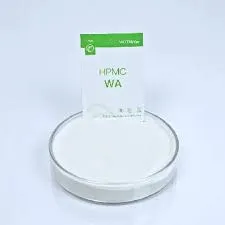
Сер . 07, 2024 14:40 Back to list
Exploring the Solubility Characteristics of Hydroxypropyl Methyl Cellulose in Various Solvents and Conditions
Understanding the Solubility of Hydroxypropyl Methylcellulose
Introduction
Hydroxypropyl methylcellulose (HPMC) is a synthetic polymer derived from cellulose, a natural polysaccharide. Widely used in various industries, particularly in food, pharmaceuticals, and construction, HPMC is renowned for its unique properties, including its ability to form gels, act as a thickener, and improve the stability of formulations. One of the most critical characteristics of HPMC is its solubility, which has significant implications on its functionality and applications.
Solubility Characteristics of HPMC
HPMC is generally soluble in water, but its solubility is influenced by several factors, including its molecular weight, concentration, and the viscosity grade. HPMC is available in a range of grades, from low to high viscosity, which determines its behavior in aqueous solutions. The solubility of HPMC in water creates a transparent solution that can form films and gels, which is beneficial in applications such as drug delivery systems and coating materials.
The solubility of HPMC also varies with temperature; as water temperature increases, solubility tends to improve. This temperature dependency is crucial for industrial applications where temperature control is a part of the manufacturing process. For instance, in the pharmaceutical industry, when preparing formulations, the solubility of HPMC can influence the release profiles of active drug ingredients.
Mechanism of Solubility
hydroxypropyl methyl cellulose solubility

The solubility of HPMC in water can be attributed to several chemical interactions. HPMC contains hydroxyl groups (-OH) introduced by the hydroxypropyl and methyl substitutions on the cellulose backbone. These hydroxyl groups enable hydrogen bonding with water molecules, allowing HPMC to dissolve effectively in an aqueous medium. The hydrophilic nature of these groups contrasts with the hydrophobic regions in the cellulose structure, leading to the polymer's unique behavior in solutions.
In addition to water solubility, HPMC can also be dispersed in organic solvents, although its solubility in these solvents is generally much lower. This dual solubility characteristic makes HPMC versatile for various uses, the most significant being in hydrocolloid formulations which benefit from the gel-forming capabilities of the polymer.
Applications Influenced by Solubility
HPMC's solubility properties open doors to numerous applications across different sectors. In the food industry, it serves as a thickening agent and stabilizer in sauces, dressings, and gluten-free baked goods. Its ability to retain moisture and improve texture makes it an essential ingredient.
In pharmaceuticals, HPMC is commonly used in controlled-release tablets and as a binder in formulations. The solubility profile directly impacts the drug release rate, which is crucial for developing effective therapeutics. Similarly, in construction, HPMC is incorporated into mortars and plasters to enhance adhesion and workability, with solubility affecting the ease of application and curing times.
Conclusion
The solubility of hydroxypropyl methylcellulose is a key attribute that determines its functionality in various applications. Understanding the factors that influence its solubility—such as molecular weight, concentration, viscosity grade, and temperature—enables industries to harness its properties effectively. As research and technology advance, the versatility of HPMC and its solubility profiles will continue to drive innovation in existing and emerging applications, solidifying its role as a critical ingredient in various formulations. Whether in pharmaceuticals, food science, or construction, HPMC remains a vital polymer that exemplifies the balance between chemical structure and functional utility.
-
Versatile Hpmc Uses in Different Industries
NewsJun.19,2025
-
Redispersible Powder's Role in Enhancing Durability of Construction Products
NewsJun.19,2025
-
Hydroxyethyl Cellulose Applications Driving Green Industrial Processes
NewsJun.19,2025
-
Exploring Different Redispersible Polymer Powder
NewsJun.19,2025
-
Choosing the Right Mortar Bonding Agent
NewsJun.19,2025
-
Applications and Significance of China Hpmc in Modern Industries
NewsJun.19,2025







